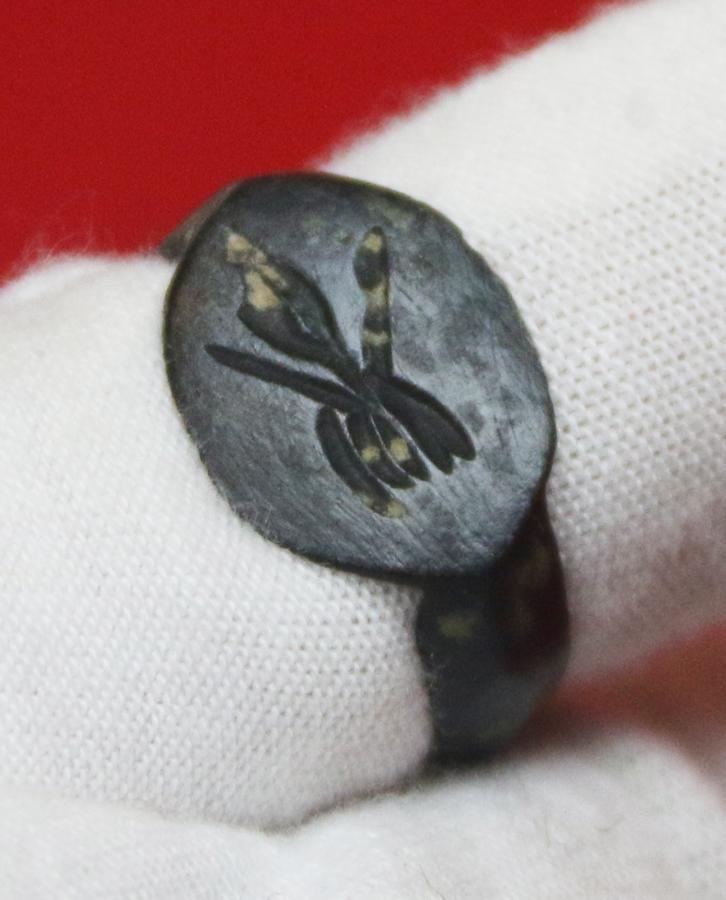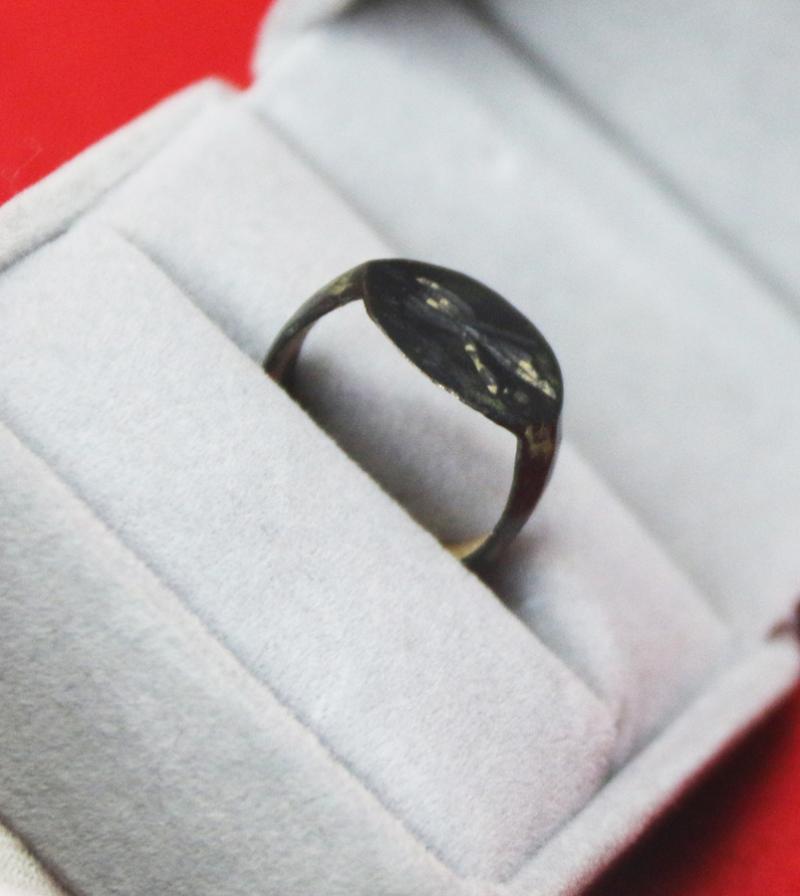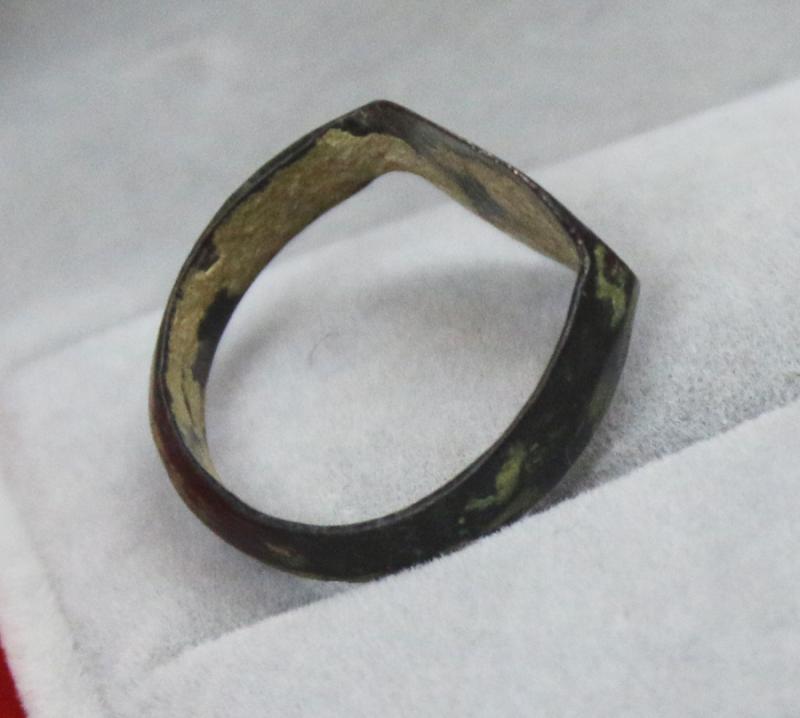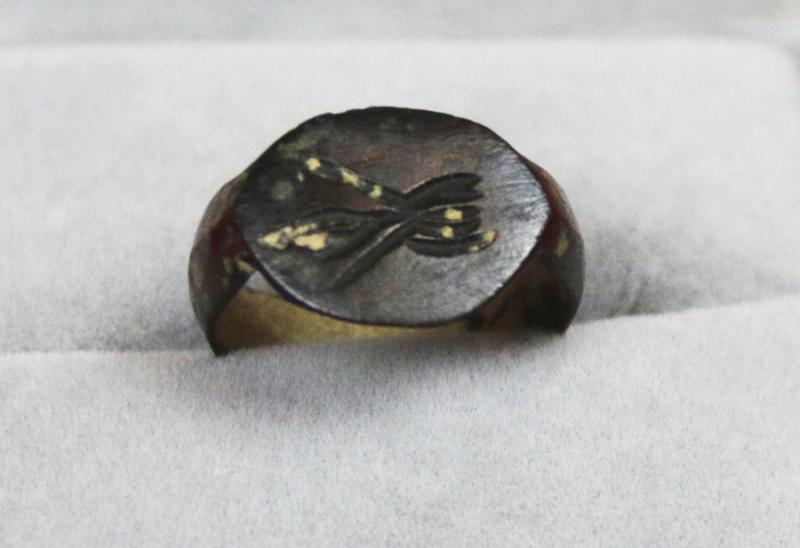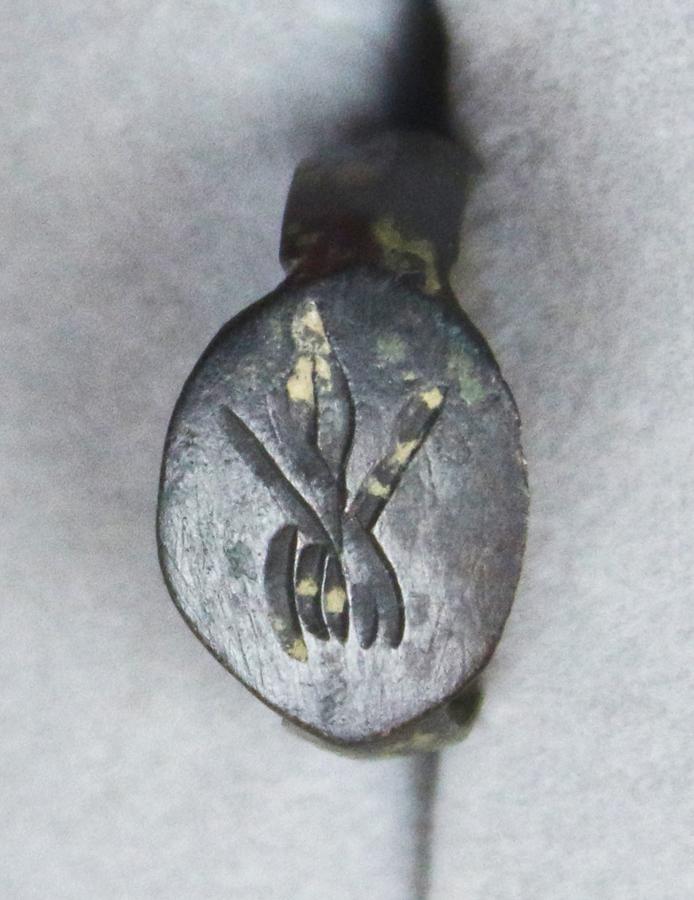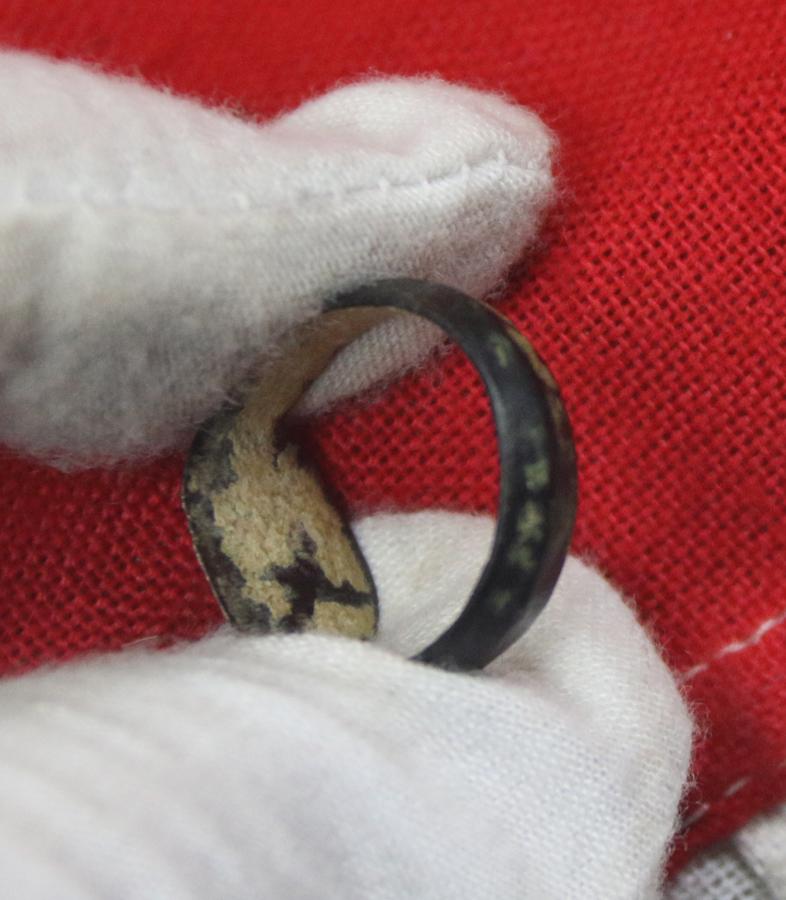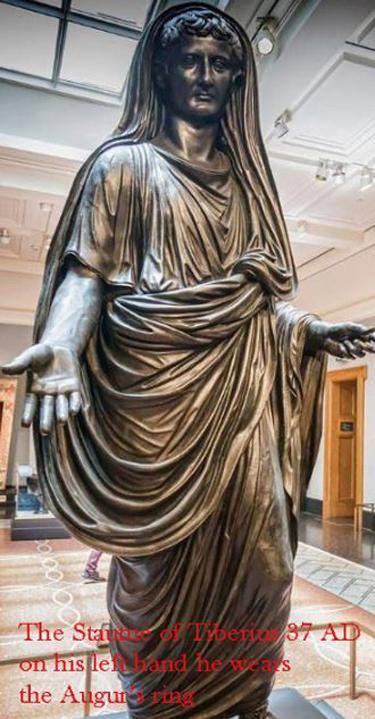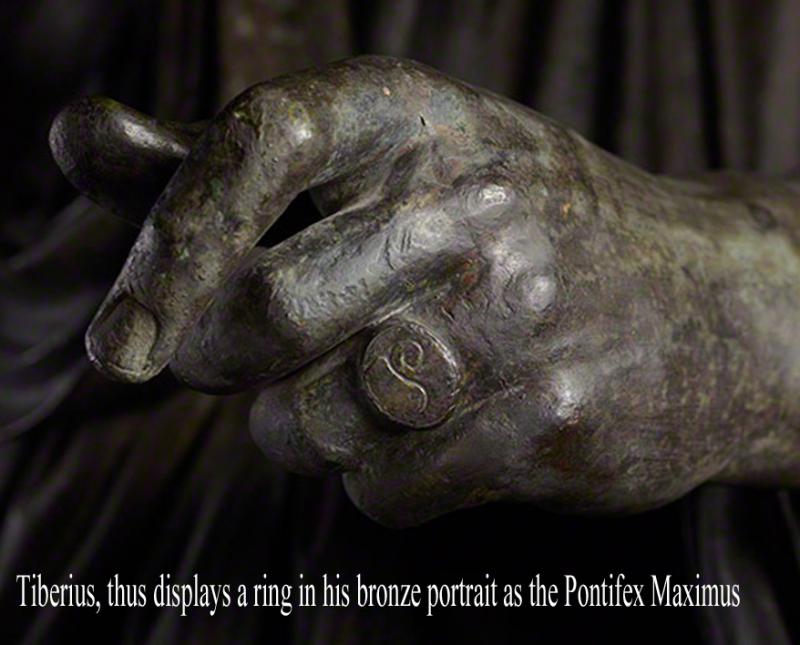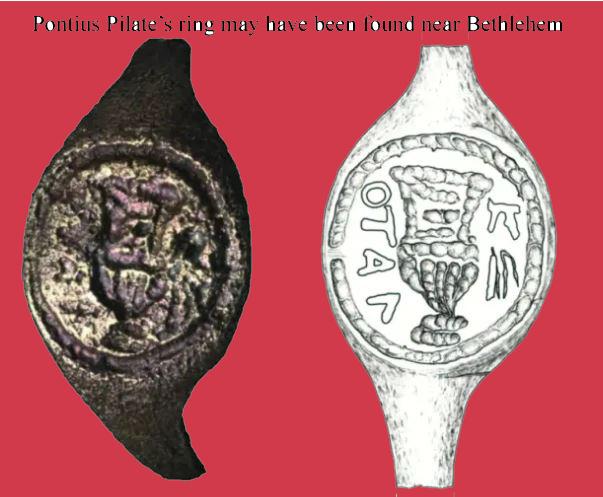A Beautiful Original Roman 2nd Century ad Modius or Fire Alter Intaglio Engraved, Bronze Equites Status Ring.
A variation on the Henig type Xb ring form, Wide oval bezel affixed to flattened shoulders engraved copper alloy. Almost identical to one found in the UK near Hadrian's Wall. Engraved to either to represent the Zaroastrian fire altar, or vessel of sprouting grains. the ring was important for displaying the Roman's status. For example Tiberius, who was after all left-handed according to Suetonius, thus displays a ring in his bronze portrait as the Pontifex Maximus: The complete Roman Empire had around a 60 million population and a census more perfect than many parts of the world (to collect taxes, of course) but identification was still quite difficult and aggravated even more because there were a maximum of 17 men names and the women received the name of the family in feminine and a number (Prima for First, Secunda for Second…). A lot of people had the same exact name.
So the Roman proved the citizenship by inscribing themselves (or the slaves when they freed them) in the census, usually accompanied with two witnesses. Roman inscribed in the census were citizens and used an iron or bronze ring to prove it. With Augustus, those that could prove a wealth of more than 400,000 sesterces were part of a privileged class called Equites (knights) that came from the original nobles that could afford a horse. The Equites were middle-high class and wore a bronze or gold ring to prove it, with the famous Angusticlavia (a tunic with an expensive red-purple twin line). Senators (those with a wealth of more than 1,000,000 sesterces) also used the gold ring and the Laticlave, a broad band of purple in the tunic.
The equites literally "horse-" or "cavalrymen", [though sometimes referred to as "knights" in English] constituted the second of the property-based classes of ancient Rome, ranking below the senatorial class. A member of the equestrian order was known as an eques
Because the Senate was limited to 600 members, equites equo publico, numbering several thousands, greatly outnumbered men of senatorial rank. Even so, senators and equites combined constituted a tiny elite in a citizen-body of about 6 million (in AD 47) and an empire with a total population of 60–70 million. This immensely wealthy elite monopolised political, military and economic power in the empire. It controlled the major offices of state, command of all military units, ownership of a significant proportion of the empire's arable land (e.g., under Nero (r. 54–68 AD), half of all land in Africa Proconsularis province was owned by just six senators) and of most major commercial enterprises.
Overall, senators and equites cooperated smoothly in the running of the empire. In contrast to the chaotic civil wars of the late Republic, the rule of this tiny oligarchy achieved a remarkable degree of political stability. In the first 250 years of the Principate (30 BC – AD 218), there was only a single episode of major internal strife: the civil war of 68–69.
So the rings were very important to tell from a glimpse of eye if a traveller was a citizen, an equites or a senator, or legionary. People sealed and signed letters with the rings and its falsification could bring death.
The fugitive slaves didn’t have rings but iron collars with texts like “If found, return me to X” which also helped to recognise them. The domesticus slaves (the ones that lived in houses) didn’t wore the collar but sometimes were marked. A ring discovered 50 years ago is now believed to possibly be the ring of Pontius Pilate himself, and it was the same copper-bronze form ring as is this one. It will come in a complimentary display box as shown
Code: 24569
325.00 GBP

